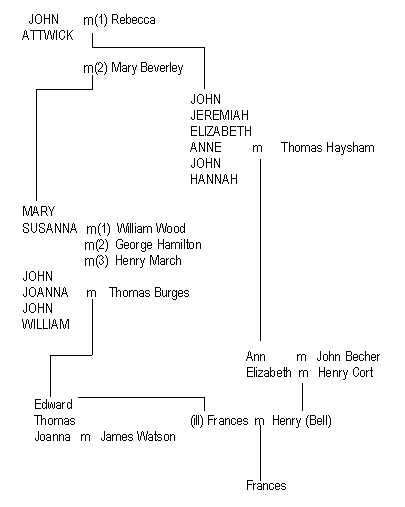 |
 |
Henry Cort Inventor - Creator of puddled iron - Father of iron trade |
 |
 |
| This page is part of a website based on the life and achievements of eighteenth-century inventor Henry Cort. The creator and owner of the site was Eric Alexander who passed away. The site is now hosted by Geneagraphie.com Please contact us with any comments or queries. |
- Homepage
- Life of Henry Cort
- Cort's processes in iron manufacture
- Cort's patents
- Refutation of allegations of conspiracies against Cort
- Adam Jellicoe's death
- Henry Cort's birth
- A navy agent's business
- Early life of John Becher
- Attwick & Burges families
- "Cortship" of second wife
- Thomas Morgan
- Henry Cort's hoops contract
- 1856 Accolade
- Generosity of friends 1789-94
- James Watson
- Illness of Cort's son
- Main sources of information
- Contemporary sources
- Navy sources
- Chancery files
- Publications about Cort
- Assessment of Cort's character
- Images of Henry Cort
Impeach-tranferred to 05
- Parliamentary inquiry 1811-2
- The furore of the 1850s
- Society of Arts
- Cort's first marriage
- Henry Cort's children
- Cort family pensions
- Henry Cort's Hertfordshire property
- 1791 signatories
- Guiana and the Cort-Gladstone connection
- Cort's twilight years
- Memorials to Henry Cort
- Smelting of iron
- Fining before Cort
- Shropshire & Staffordshire ironmasters
- Cumbrians: Wilkinson etc
- Early works at Merthyr Tydfil
- The Crowley business
- London ironmongers
- Scottish iron
- Cort's promotion efforts 1783-6
- Later Merthyr connections
- Puddling after Henry Cort
- Gosport in Cort's day
- Gosport administration
- Gosport worthies
- The Amherst-Porter network
- James Hackman, murderer
- Samuel Marshall
- Samuel Jellicoe's legacy
- Links with Titchfield
- Links with Fareham
- Fact, error and conjecture
- 18th century politics
- Law in the 18th century
- 18th century finance
- Religion and sexual mores
- Calendar change of 1752
- Shelburne, Parry and associates
- John Becher's family
- The Becher-Thackeray lineage
- Thomas Lyttelton: a fantastic narrative
- Eighteenth-century London
- Abolition and the Corts
- The Burges will tangle
- Navy connections
- Navy agent's business
- Cort's clients
- Ships' pursers
- History of Adam Jellicoe
- Dundas & Trotter
- Cort's navy office associates
- Toulmin & other agents
- Sandwich & Middleton
- The Arethusa
- John Becher's war
- Thomas Morgan's war
- The 1782 Jamaica convoy
- Sinking of the Royal George
- Visitors 2006-2009
- Developement of the site 2006-2009
- Daniel Guion and family
- Extremely bad academic work and extremely bad journalism
****************
|
|
Attwick and Burges Families
Attwick family origins
Ironmonger John Attwick arrives in Gosport from Portsmouth, early in the eighteenth century.
In 1722 he wins a contract to supply the Royal Naval Dockyard at Portsmouth. This contract will remain with the business under its various owners into the nineteenth century.
 Items supplied include bolts, nails, staples, hooks. rings, hinges, locks and tools of many types. Mooring chains, anchors, even coal, also feature in the business.
Items supplied include bolts, nails, staples, hooks. rings, hinges, locks and tools of many types. Mooring chains, anchors, even coal, also feature in the business.
Some of these items are made at a forge in Gosport, but most are bought elsewhere, notably the West Midlands.
Attwick family details
John is married twice, fathering twelve children in all.
Of these, four are named John, showing that three have died in infancy. The youngest John survives his father by less than a year.
Only two other sons survive their father.
Jeremiah, the elder, is cut out of John's will, which leaves the business to William when he reaches the age of 21 in 1751.
John's daughter Ann marries lawyer Thomas Haysham. They have six children, but only Ann the eldest and Elizabeth the youngest make it through to posterity.
Ann marries John Becher in 1761. Elizabeth becomes Henry Cort's second wife in 1768.
John's daughter Susanna marries ship's surgeon William Wood. They have one child. Her second marriage is to George Hamilton, her third to Henry March.
Burges family fortunes
John Attwick's daughter Joanna marries Thomas Burges (described later as a watchmaker in the will of John's widow Mary) in 1745. Three children are baptised in Gosport between 1751 and 1755.
The family have close links with the Ives and Missings of Titchfield. When daughter Joanna marries James Watson there in August 1777, Edward Ives and John Missing sign as witnesses. (It is probably a different, but closely related, John Missing who will join the service of the East India army, arriving in Bengal in September 1782.)
By 1797, when Thomas makes his will, he is in India. It is clear from this document, however, that he is well ensconced there by the time his daughter arrives with her husband James Watson in 1796. Among Burges associates are surgeon Michael Cheese and East India army officer Thomas Dowell, both of whom are witnesses to Edward Burges's will in 1800.
The pages on this site are copied from the original site of Eric Alexander (henrycort.net) with his allowance.
Eric passed away abt 2012
If you use/copy information from this site, please include a link to the page where you found the information.
